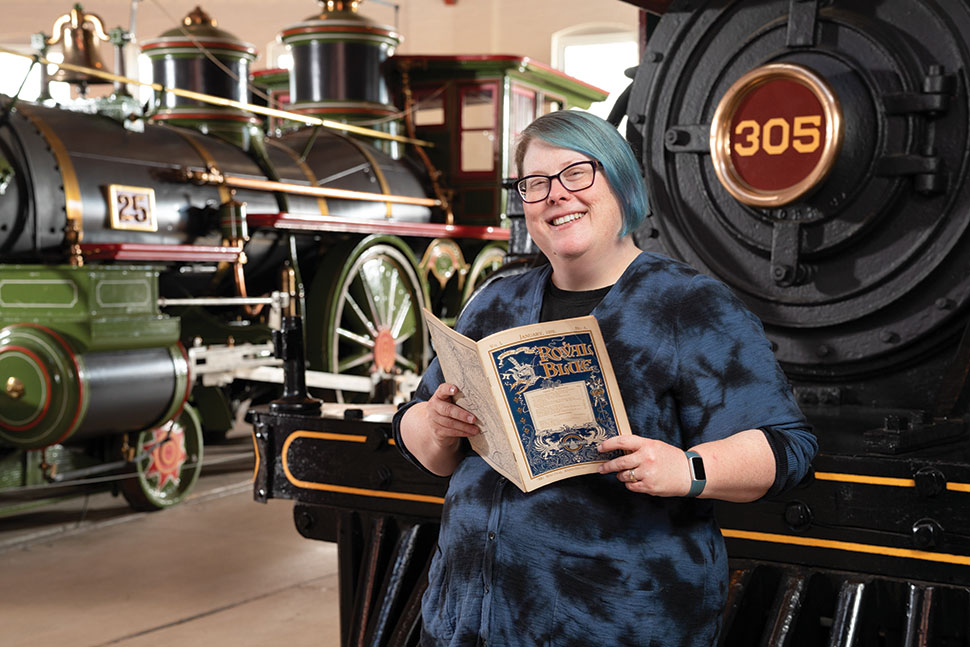
In 1827, the Baltimore and Ohio (B&O) Railroad became the first common carrier railway in the US, revolutionizing commercial travel. Its creation cemented Baltimore as the “birthplace of American railroading,” says Anna Kresmer, archivist at the B&O Railroad Museum (BORM), located in the city’s historic Mount Clare Station and Roundhouse building.
“It really [was] a seismic culture shift,” Kresmer says. “We call it the moonshot. We liken it to the internet, how it had that kind of change on people.”
Kresmer analyzes and catalogs materials, supports exhibit development, and oversees BORM’s research library, home to more than 5,000 titles. Locomotives aside, BORM’s collection—including its archives, library, and small objects—measures approximately 7,200 linear feet. Most items are from the 1820s to early 1970s.
Kresmer fulfills reference requests across disciplines, from rail history buffs to authors and screenwriters seeking to tell historically accurate stories. Standouts from the library and archives, according to Kresmer, include original journals of surveyors determining the railroad’s path; stereo slides of the 1927 Fair of the Iron Horse, B&O’s two-week-long centennial celebration; and a mechanical pencil gifted by President Abraham Lincoln to then–B&O President John Work Garrett (their friendship helped keep B&O’s services open to the Union during the Civil War).
These materials, Kresmer says, help provide broader context for societal changes in the 19th and 20th centuries, particularly with establishing a shared American identity.
“The railroad changed our concept and understanding of distance and what constituted a country,” she says. “It took us from small town or small colony identification into a nation.”


